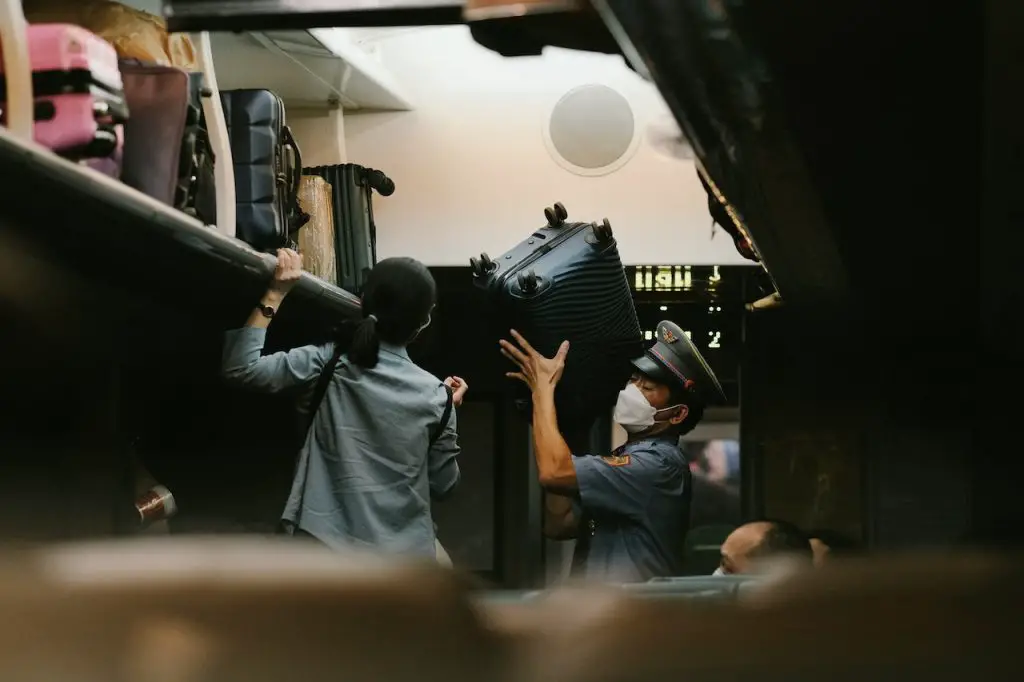Are Binoculars Allowed In Planes?

Are you planning to bring your binoculars with you on your next flight? If so, you may be wondering if it’s allowed and how to properly pack them.
The good news is that you can usually bring binoculars on a plane, but there are rules and regulations that you need to follow.
In this article, we’ll guide you through the TSA and IATA rules on carrying binoculars, and provide tips on how to choose the right binoculars for travel, pack them properly, and prepare for security checks.
Quick Answer: Yes, You can carry binoculars on a plane with you in the cabin or checked bags, as long as they are in a protective case that fits within the size limits for carry-on or checked luggage. Remember to check the TSA website for the latest rules and regulations on carrying items on a plane. Also, remember to check with your airline and destination country for any specific rules or restrictions.
Also Read: Choosing Binoculars For Plane Spotting and Airshows-The Ultimate Guide
Transportation Security Administration (TSA) rules on carrying binoculars:
TSA Carry-On/Cabin Luggage Regulations:
According to TSA regulations, you are allowed to carry one pair of binoculars in your carry-on luggage on a plane. However, the binoculars must be in a protective case, and the case must fit within the carry-on bag’s size limit.
TSA Checked Luggage Regulations:
If you do not want to carry your binoculars on the plane, you can check them in with your luggage. TSA allows binoculars in checked luggage, but you must ensure that they are in a protective case, and the case is sturdy enough to withstand the handling process.
In some cases, TSA officers may ask to inspect your binoculars, either in your carry-on or checked luggage.
If they find anything that violates TSA regulations, such as prohibited items, your luggage may be delayed, or the item may be confiscated.
International Air Transport Association (IATA) rules on carrying binoculars
When it comes to traveling internationally, it is also important to understand the rules and regulations of the International Air Transport Association (IATA) regarding carrying binoculars on a plane.
IATA carry-on/Cabin luggage regulations
According to IATA regulations, passengers are allowed to carry binoculars in their carry-on luggage. However, the binoculars must be able to fit into the overhead compartment or under the seat in front of them. If the binoculars do not fit, they may be required to be checked in.
IATA Checked luggage Regulations
Binoculars are also allowed in checked luggage, but it is important to ensure they are packed securely to prevent damage during transit. It is recommended to pack the binoculars in a protective case and wrap them in clothing or other soft materials to provide extra padding.
IATA has some general rules that apply to both carry-on and checked luggage.
These include restrictions on hazardous materials such as lithium batteries and flammable items. It is important to check the IATA website or consult with your airline to ensure that your binoculars and other items are compliant with their regulations.
In addition to IATA regulations, some countries may have their own rules and regulations regarding the transportation of binoculars.
It is important to research the specific regulations of your destination country and any countries you may be passing through during your journey.
Let Us Talk About Some Restrictions;
It is worth noting that while binoculars are generally allowed on airplanes, there are certain types of binoculars that may be restricted. For example, night vision binoculars or binoculars with laser rangefinders may be subject to additional regulations.

Should You Pack Your Binoculars in Checked Luggage or Keep Them In Cabin With You?
While it may seem like a good idea to pack your binoculars in your checked luggage, this decision may come with certain risks.
Due to the lack of pressurization in the luggage hold, there is a chance that the airtight seals of the binoculars could be damaged by excess pressure, rendering them no longer waterproof or fogproof.
In addition, there is a risk of theft or loss of valuables in checked luggage. To avoid these potential issues, it is recommended to keep valuable items like binoculars nearby at all times and avoid checking them in.
Taking Binoculars In Cabin With You While Flying: Things To Know
We believe that bringing your binoculars in your carry-on luggage when flying is more beneficial than checking them into the hold.
However, there are also drawbacks to carrying them on. The size of your carry-on bag is typically limited to fit in the overhead compartment, and sometimes there are weight limits too.
Also note that, once the binoculars are in their padded case, they will take up a considerable amount of space.
Once inside the cabin, you can take your binoculars bag outside from your main luggage and place them under the seat in front of you. This would keep also keep your binoculars within sight.
However, if you are not comfortable with this option, then it’s recommended to pack them in the middle of your bag, carefully wrapped in materials like padded envelopes, thick clothing, or a camping/yoga mat.
Is It Okay to Wear Binoculars Around Your Neck on a Plane?
Yes, you can carry binoculars around your neck on a plane as long as they comply with the airline’s carry-on luggage regulations. I would also suggest checking with the specific airline you are flying with.
It’s worth noting that wearing binoculars around your neck for an extended period might become uncomfortable during the flight.
Additionally, you need to be mindful of not disturbing other passengers while moving around the cabin.
Do I Need To Put Binoculars in a Separate Bag for Airport Security?
The Transportation Security Administration (TSA) requires all electronic devices larger than a cell phone, including binoculars, to be removed from your carry-on luggage and placed in a separate bin for X-ray screening.
This is to ensure that the binoculars do not obstruct the view of the X-ray machine and that the TSA officers can inspect them more thoroughly.
It is also recommended that you pack your binoculars in a protective case and wrap them securely to prevent any damage during transportation.
When you reach the security checkpoint, you can remove them from your bag and place them in a separate bin for screening.
After the screening is complete, you can pack them back into your bag and proceed to your gate.
It’s always a good idea to check the TSA website for the latest guidelines and regulations regarding carry-on items before you travel.
An Interesting Video:
More Tips for Traveling with Binoculars
Also Read: Do Binoculars Enhance Airshow Experience
Here are some tips for traveling with binoculars:
Choosing the Right Binoculars for Travel
When choosing binoculars for travel, consider the following factors:
Factors
Size and weight: Look for lightweight and compact binoculars that are easy to carry and won’t take up too much space in your luggage.
Magnification: Higher magnification means better detail, but it also means a narrower field of view and shakier images due to hand tremors. Choose a magnification that suits your needs and abilities.
Durability: Opt for binoculars that are durable and sturdy enough to withstand travel and outdoor use.
Proper Packing of Binoculars for Travel
To avoid damage or breakage, follow these guidelines when packing your binoculars for travel:
Use a padded carrying case: A padded carrying case will protect your binoculars from scratches and impacts during transit.
Remove the batteries: If your binoculars have batteries, remove them and pack them separately in your carry-on luggage.
Use a strap: Attach a strap to your binoculars so that you can wear them around your neck or shoulder while traveling.
Secure in your luggage: Place your binoculars in a secure location in your luggage to avoid shifting or bouncing during transit.
Preparing for Security Checks
To ensure a smooth passage through airport security, follow these tips:
Check TSA and IATA regulations:
Familiarize yourself with the TSA and IATA regulations regarding binoculars in carry-on and checked luggage to avoid any issues at the airport.
Pack in carry-on luggage:
It’s generally recommended to pack binoculars in your carry-on luggage, as checked luggage is more likely to be mishandled or damaged.
Remove from the bag:
Remove your binoculars from your bag and place them in a separate bin during the security screening process.
Declare if necessary:
If your binoculars have any features that could be mistaken for prohibited items (such as laser rangefinders), declare them to the security personnel before the screening process.
By following these guidelines, you can ensure that your binoculars are safely transported and that you are prepared for any security checks during your travels.
Conclusion
Whether you’re headed out on a bird-watching adventure or want to capture the stunning views of your destination from above, you can easily pack your binoculars in your luggage or even wear them around your neck.
Just make sure to comply with airline regulations and pack them safely to avoid any damage during transit.
So, get ready to soar high in the sky and explore the beauty of the world with your trusty binoculars by your side!
Resources:
Transportation Security Administration (TSA). (n.d.). What Can I Bring? TSA.gov. https://www.tsa.gov/travel/security-screening/whatcanibring/items/binoculars
Similar Reads:
Can I Bring Binoculars In Burj Khalifa?
Are Binoculars Allowed in Singapore?
Are Binoculars Allowed at Kruger National Park?
